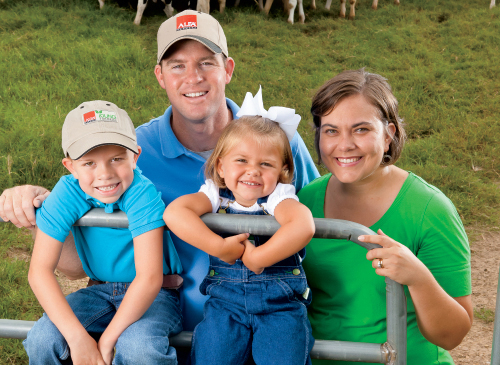Home > Alabama > Alabama Technology > Alabama Milking Technology
Alabama Milking Technology
Like most facets of agriculture, the dairy industry is constantly evolving to keep up with demand, best practices and regulations. Alabama is home to 55 dairies, each with approximately 175 milking cows. These farmers constantly strive to bring consumers quality products despite rising operating costs.
“We have to continuously find ways to manage our dairy more efficiently and improve both the quantity and quality of the milk our cows produce in an industry with profit margins much, much tighter than they were 10 years ago,” says Will Gilmer, operator of Gilmer Dairy. “These are the ‘rules of the game,’ so to speak. We all have to adapt if we want to keep farming.”
Stricter regulations and high production costs force dairy farmers to improve their herd genetics and upgrade their facilities. Modern dairy farming is now a sophisticated science that relies on technological innovations and the ability to adapt.
“Most Americans do not have a direct personal or family connection with a farm, and oftentimes I find that they have a romanticized view that agriculture was at its best two and three generations ago,” says Gilmer. “It’s important that we show how advances in technology have allowed us to produce higher-quality products while conserving more of our natural resources.”
Gilmer created a website 10 years ago to share information about the farm and industry with the public so people could better understand what happens on a modern dairy farm. Gilmer started a blog in 2007 in order to engage the public in the day-to-day activities.
“Social networks like Facebook and Twitter were the logical next step, as they allow for a steady exchange of information and dialogue with a virtually unlimited audience,” Gilmer, one of the 46 percent of young farmers who now use social media, says. “Regardless of the delivery method – website, blog, social media – the overall goal has always been the same: show people where and how their food is produced and be available to answer questions they might have about it.”
Gilmer takes pride in knowing that he is a trusted source of information for people who may never actually see a cow in person. “Feedback has been overwhelmingly positive, both from consumers who say they better understand where their milk comes from thanks to our outreach efforts, and from other farmers,” Gilmer says. “We cannot put a monetary value on the ‘return on investment’ from using social media because we do not use it specifically to market the milk or beef we produce on our own farm, but helping people understand what happens on our farm and in our industry is good for consumer confidence.”




